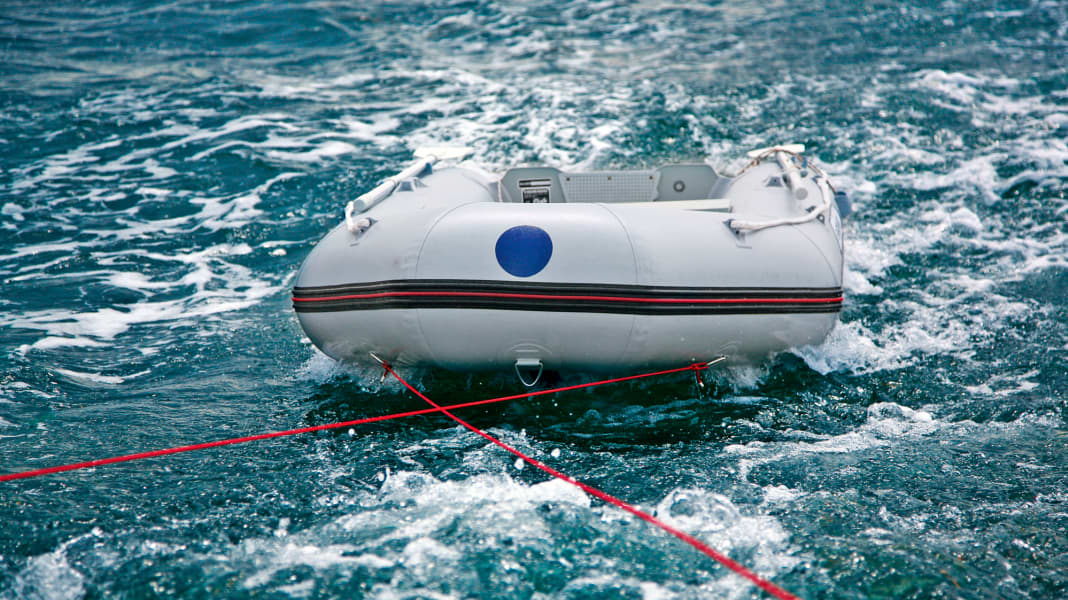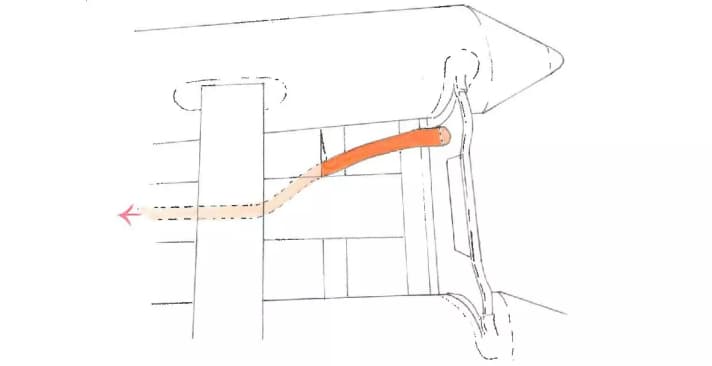

Dinghy lifehack 1:The pool noodle as a keelson
Flat-bottomed inflatable boats are light, inexpensive and very space-saving. However, they are known to suffer from poor course stability, especially when they are lightly loaded. This is noticeable when rowing and manoeuvring slowly with an outboard motor. We cut back a floating noodle made of closed-cell foam and gave it a D-shaped cross-section. We then pushed the noodle between the slats and the outer skin. This gives the floor a slight V-shape. Although the upturn is small, the dinghy's handling behaviour is significantly improved. If the battens are connected to the outer skin by central tabs, you can use two noodles to the right and left of the tabs. This gives the floor two skids.
Dr Massimo Morandini, Lugano/Switzerland

Dinghy lifehack 2:Keep your distance
The straps on our dinghy were not secured. The problem was solved by attaching two straps directly over the blade and to the cleats with a woven rope. Fixed in this way, the straps also fulfil another function: Without locking in the cleats, the oars slipped forwards and backwards when rowing. This change in position made it almost impossible to sail straight ahead. If the correct length is ensured when attaching the straps, the comfort when furling is also improved enormously.
Jochen Peschke, Hamburg

Dinghy lifehack 3:Comfortable shore leave
As the owner of a buoy mooring, I can only get to the ship by dinghy. Not bad, if it weren't for the inconvenience of transporting the dinghy ashore. To make it easier to move my boat to the water, I was looking for a roller solution. However, the equipment suppliers' offers were either too expensive or didn't meet my expectations. I was finally happy with a folding hand truck (Wolfcraft, around 60 euros): I screwed it to the transom at a 90 degree angle so that I could fold up the wheels on the water. I sawed off the handle.
Gerhard Ritter, Korb

Dinghy lifehack 4:Sit & row better
We can only accommodate a small inflatable boat on board. This is not equipped with a fixed bench seat. As we were unable to achieve success with a fender pressed between the tubes or with a professional seat sausage, we came up with the following idea: two fenders are placed lengthways in the boat and lashed to a board. The advantage of this solution is that the board provides a good seat and the two fenders distribute the force over several floor slats, making the whole construction more stable in the boat. This makes our mini dinghy comparatively comfortable to row.
Jochen Peschke, Hamburg
Do you have any advice for other sailors?
We will honour the publication of your lifehack with50 EURO.Please add photos or sketches. We also need your address and bank details
Submissions to: Editorial office YACHT, Quartier O, Paul-Dessau-Straße 8, 22761 Hamburg; or: mail@yacht.de
